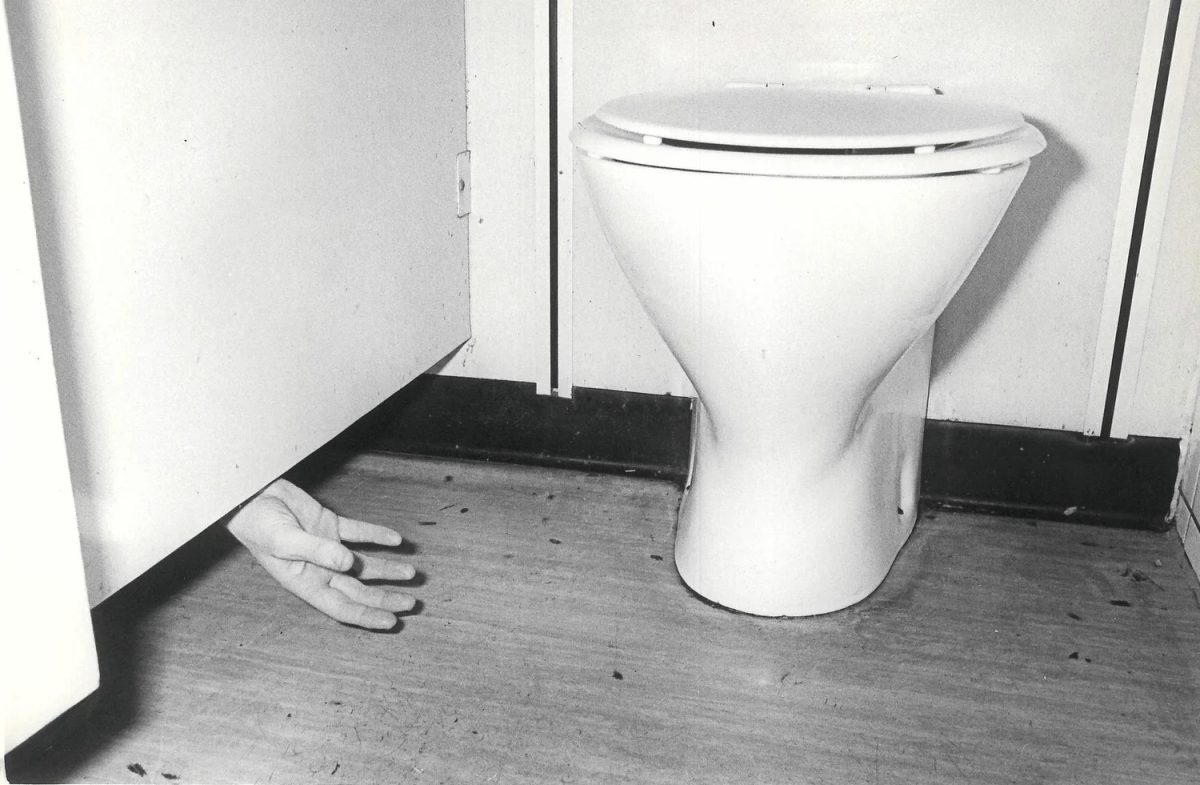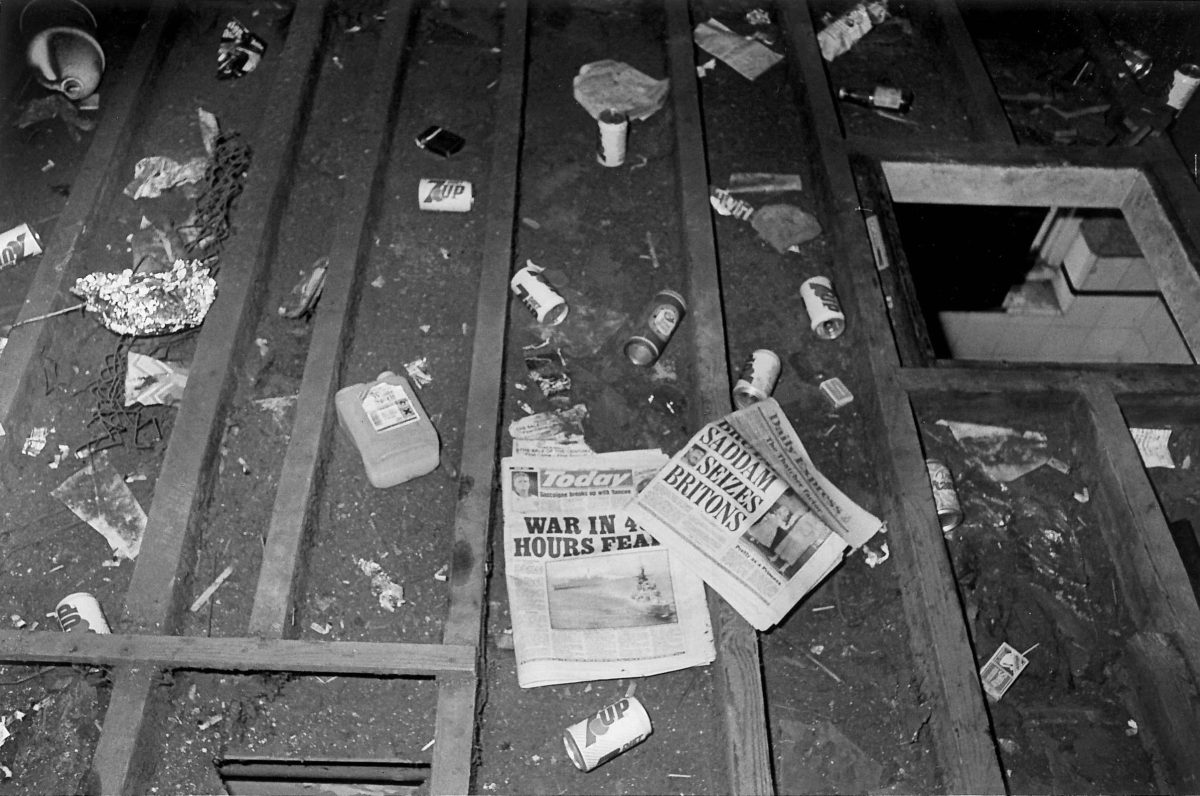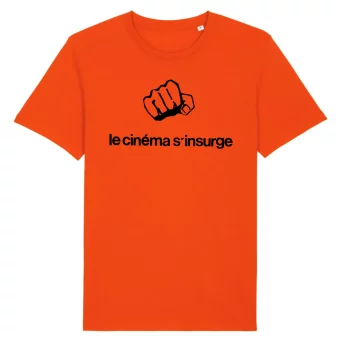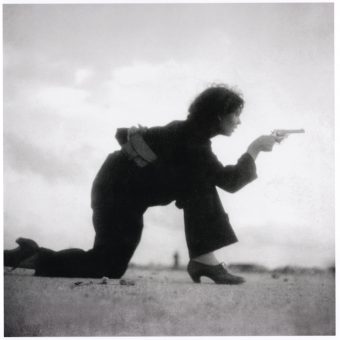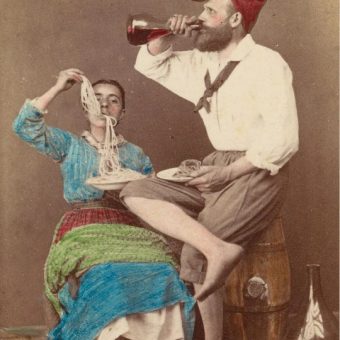“This is a piece of history you can’t deny.”
Phil Polglaze spent years photographing London’s public toilets – in parks, department stores and train stations – where gay men were arrested for buying, selling and having sex. His ‘cottaging’ pictures formed part of their legal defence.
“For some people it ruined their lives,” he says. “Some were guilty, yes; some were innocent, yes. But don’t forget these stories were printed in the local newspapers. I was honest, as much as I could be, for these poor blokes.”
Cottaging Case 1: The Norwegian’s Reach
In 1990 a Norwegian seaman had been charged over an alleged sexual encounter. It was put to the court that the defendant had entered the toilet at Kingston train station in south-west London and reached his arm under the partition between two cubicles.
On 22 November 1990, working for the seaman’s defence, Polglaze, a barrister, the solicitor and the solicitor’s clerk visited the toilet to reenact the alleged event. The clerk lay on the floor of one cubicle and reached his arm under the dividing wall to the adjoining cubicle. Polglaze took the following picture.
The team was keen to show that the Norwegian could never have reached far enough to achieve what he was accused of. In court, the sailor was found not guilty. Polglaze adds, “the humour is that when the defendant left the box, he had the longest arms you have ever seen in your life!”
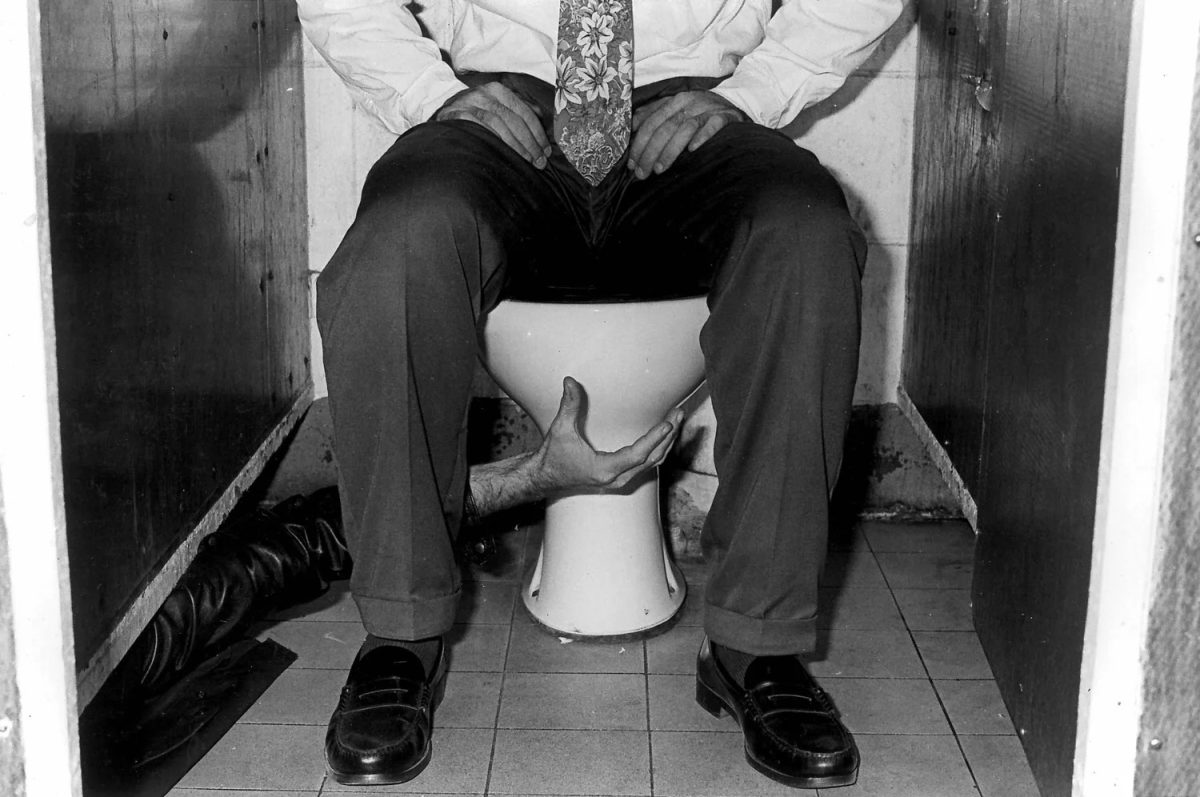
The Norwegian Sailor’s Case – Kingston Railway Station, 22 November 1990
Cottaging, Bog Jobs & Gay Sex
From 1979 until 1996, Phil Polglaze worked with a criminal defence barrister to produce pictures that could be used in court to prove the innocence of men who were on trial for gross indecency after cottaging.
The term ‘cottaging’ refers to cruising in search of sex, or having casual sex in public toilets. Most often, it’s associated with gay men.
The word comes from the 19th-century use of ‘cottage’ to describe small public toilet blocks in Britain (also dubbed ‘tea-rooms’), which were popular places for a sexual encounter.
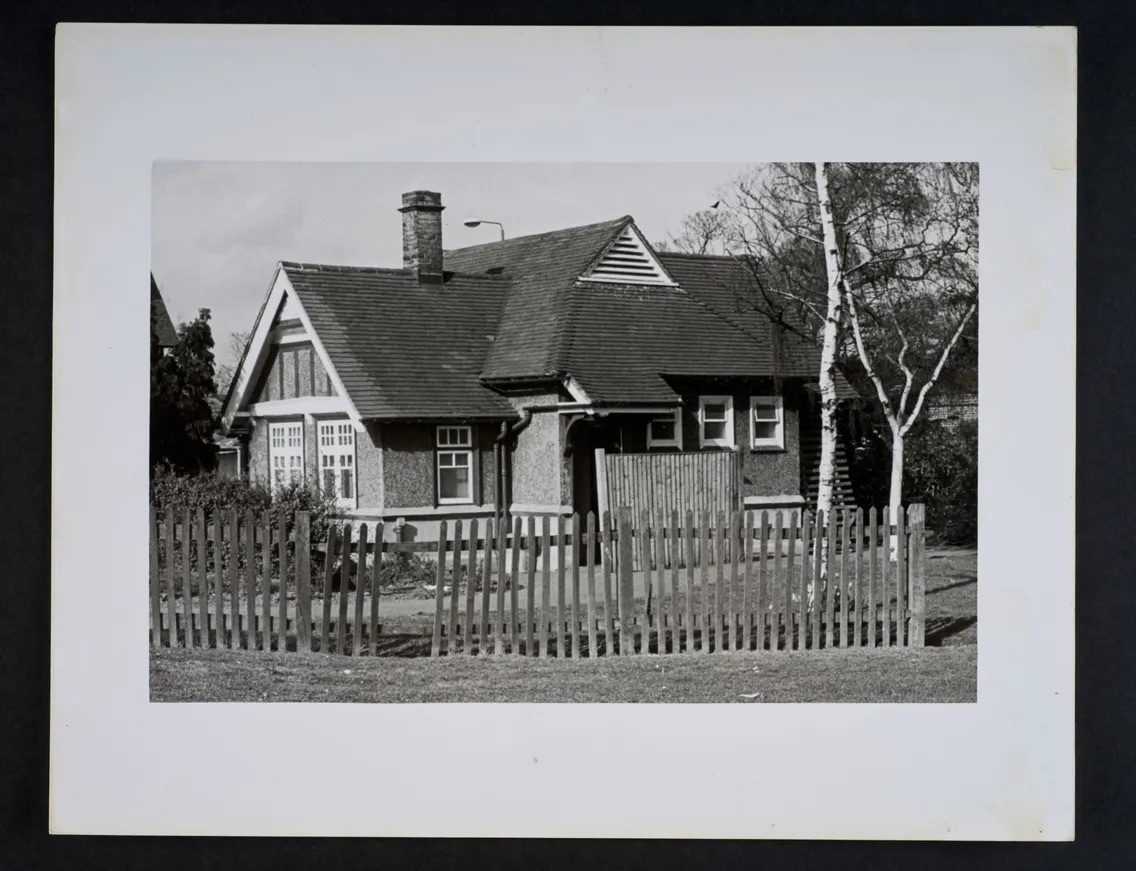
A cottage-style public toilet in Blackheath, London
As in the case of the aforesaid Norwegian sailor, the defence team would reconstruct the scene and use camera angles to show whether a witness could have seen the alleged crime or not. One reconstruction in Blackheath demonstrated that what police claimed they had seen was physically impossible – a man being masturbated by another man from the adjacent cubicle.
The Long Arm of the Law
Homosexuality was partly decriminalised by the Sexual Offences Act of 1967. But in the 1980s and 1990s, anti-gay laws, the AIDS crisis and Section 28 – a law prohibiting the promotion or teaching of homosexuality in schools – meant that many gay men stayed closeted, keeping their sexuality private. (Gay sex remained illegal in Scotland and Northern Ireland until 1982.)
That made secretive sex, often in public places, the only way to meet others.
It was risky. If caught, gay men risked a charge of gross indecency or ‘buggery’, punishable by imprisonment. In the years following the 1967 law change, some public displays of affection could be criminalised as “procuring” or “soliciting”. Gross indecency covered activities ranging from having sex in public, to sexual activity in private involving more than two men. Hotels were counted as public and so men could be prosecuted for meeting there while others were convicted as recently as 1998 for having group sex in private.
In the decades after 1967, as many as 15,000 gay men are estimated to have been convicted of these charges.
And police were determined to get their man.
“This cottage, at Home Park near Wembley, was absolutely notorious,” say Phil. “Over a single month in 1984, the police arrested 400 men. They got up into the loft, drilled observation holes through the floor and just watched what was going on down below. At the appropriate time, they’d come swarming down from the hatch and start nicking. Usually it was what they called the ‘rule of three’- they’d see a man talking to one bloke, then another, then on the third one, they had enough evidence to arrest him for importuning.”
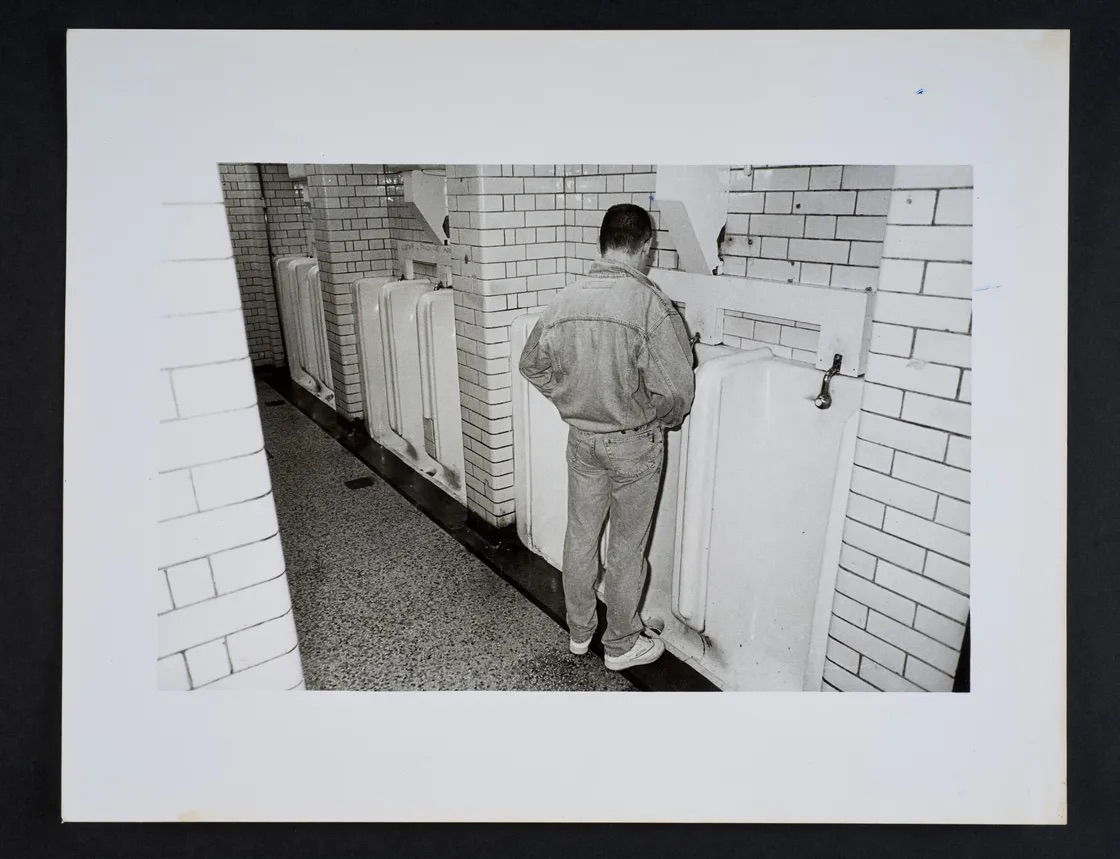
A defendant demonstrating where he was stood when arrested for cottaging.
Phil Polglaze
In 1974, Polglaze was working as a geography teacher at a south London school. Already a keen amateur photographer, he used the school’s darkroom to teach himself how to print pictures. The London borough of Southwark then employed him as a photographer through the 1980s and 1990s.
In 1979, Polglaze was approached by a lawyer friend who needed an unusual set of pictures taken.
The lawyer was working on a cottaging case. The argument in defence of his client depended on demonstrating a certain sightline in a north London public toilet.
Unable to bring the judge and jury to the location, he needed to rely on photographic evidence. Polglaze was asked to do the job. So began a 20-year occupation during which he visited and photographed the scene of alleged crimes, including robbery, arson, murder, rape and road accidents. He always worked on behalf of the defendant.
In the early 1980s, Polglaze was doing four or five bog jobs a week. It’s an indication of how much police activity was directed towards catching gay men and a reflection of the political climate.

A reenactment in Finchley, north London
“My job as a photographer was to assess the structure of the place and establish sightlines. It was a way of establishing facts without taking juries to the location, which would’ve been unthinkable. You have to be neutral, you can’t bend the truth in order to get someone off. But you can establish sightlines: could a policeman genuinely have seen an erect penis from such-and-such an angle? Could sex really have taken place through this glory hole, or under this cubicle partition?”
– Phil Polglaze

Carnaby Street, 19 September 1991
“It is easier to put things into pictures than to take them out. For instance, there were some toilets with ‘meet me big boy tonight’ or ‘here’s my phone number I’ll show you a good time’ [scribbled on the wall]… If you include that in a photograph, would you be influencing a jury? So you just bring the angle down a bit. Your brain fills in the rest but you don’t see it.”
– Phil Polglaze
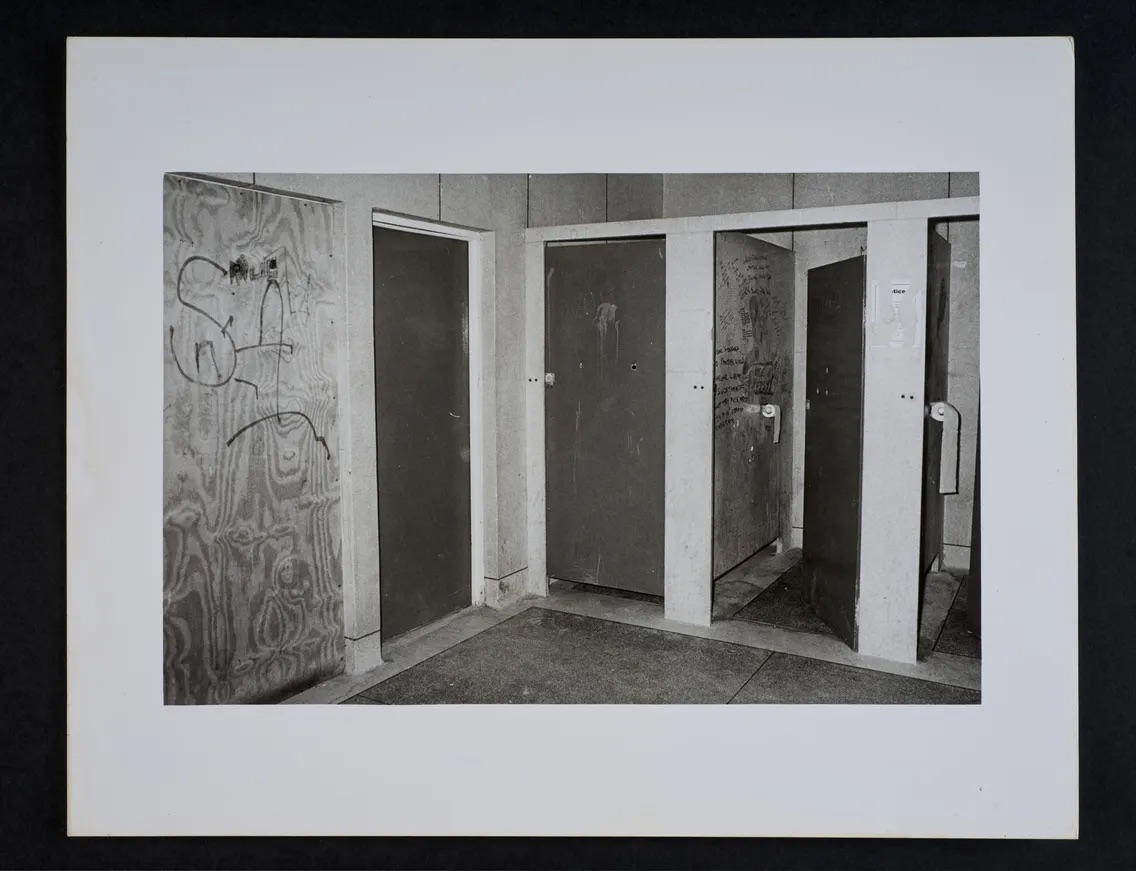
Sydenham toilets
Polglaze’s bog jobs came to an end when Legal Aid was cut for cottaging cases. The struggle for gay rights also gained ground in the 1990s, changing the culture and reducing the need to have sex in secret.
Many of the public toilets photographed by Polglaze have been knocked down, boarded up or turned into flats or cafes.

Via: Museum of London, The Farmer’s Arms
Would you like to support Flashbak?
Please consider making a donation to our site. We don't want to rely on ads to bring you the best of visual culture. You can also support us by signing up to our Mailing List. And you can also follow us on Facebook, Instagram and Twitter. For great art and culture delivered to your door, visit our shop.
